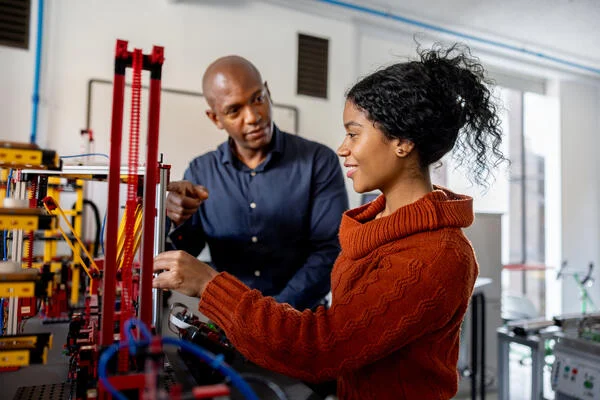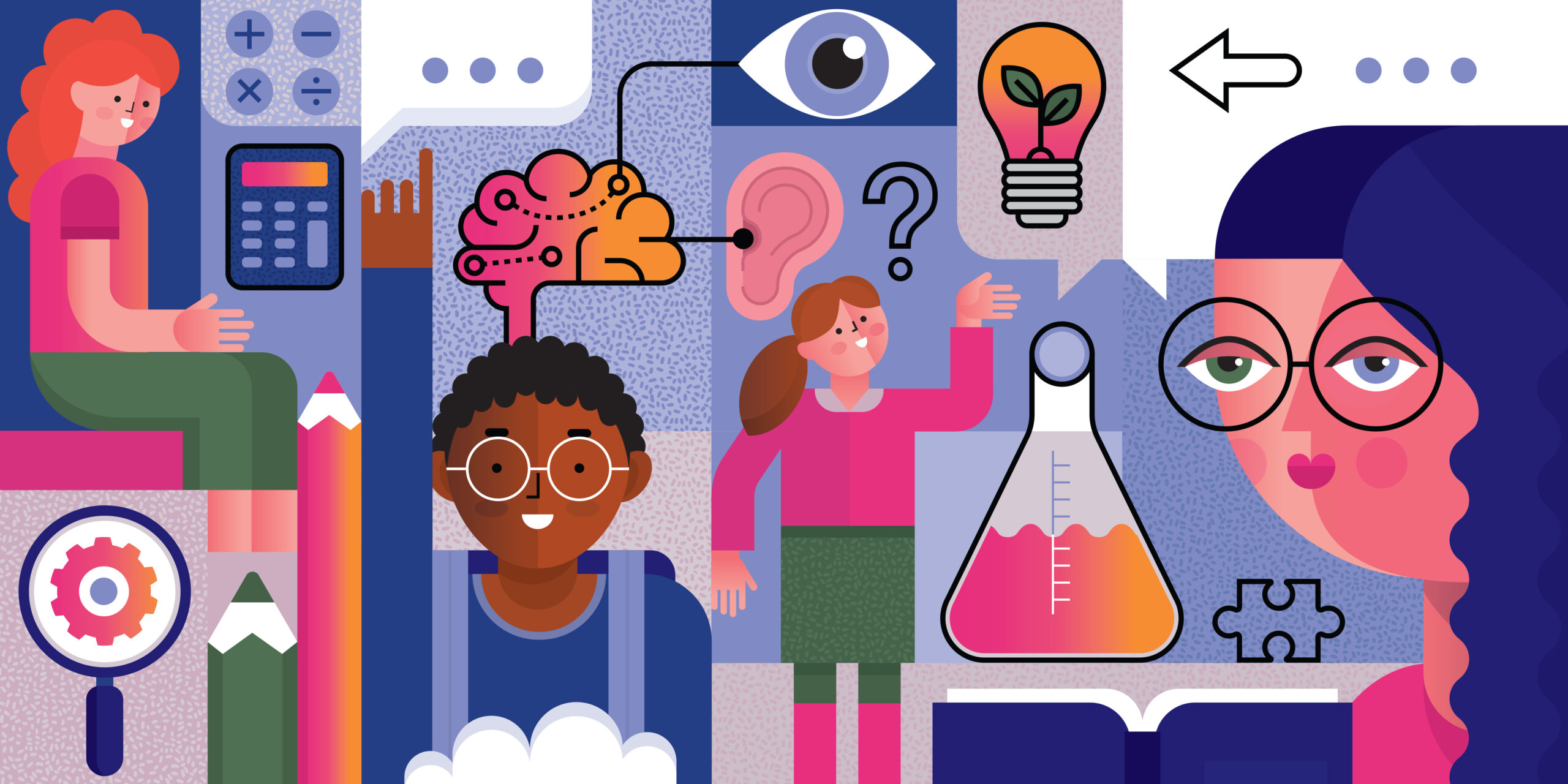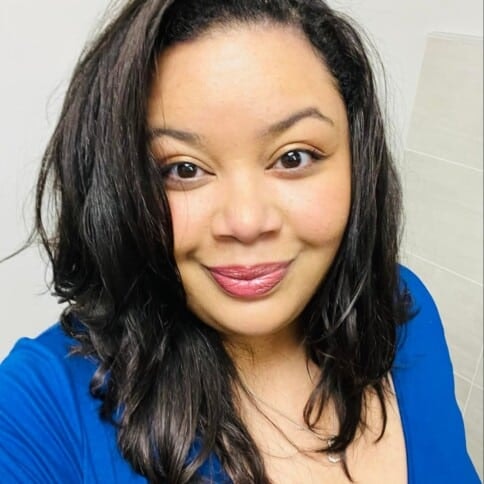Nearly seven years ago, in February 2019, UCU published Staying Power, an investigation into the professional experiences of 20 Black woman professors in UK higher education, authored by Nicola Rollock. At the time, the total number of UK Black women professors numbered only 25.
Against the backdrop of an often highly hierarchical higher education academic culture that assumes capacity for high workloads, and with numerous unwritten codes of conduct, many of Rollock’s respondents documented instances of bullying, racial stereotyping, low-level aggressive behaviour and the constant tacit expectation to prove themselves, leading to feelings of stress, anxiety, exhaustion and burnout. But despite these experiences, they had navigated a career path to professorship, adopting strategies to advance their careers, while absorbing setbacks and blockages strewn in their paths.
In the intervening years, the conversation about race, equity and higher education intensified. Later in 2019 recent graduates Chelsea Kwakye and Ore Ogunbiyi published Taking up space, which documented their experiences as Black students at the University of Cambridge. In October of that year the Equality and Human Rights Commission published the findings of a national investigation into racial harassment in universities.
The UK higher education sector was pursuing action on race awarding gaps, and developing the Race Equality Charter to embed anti-racist practice in institutions. Students’ unions campaigned for ethnic and cultural diversity in the curriculum, and for bursaries and additional support to open up pathways for Black students into research careers. Senior appointments were made to spearhead equality, diversity and inclusion, and commitments to change were published. In 2020, Rollock curated Phenomenal women: portraits of Black female professors, a landmark photography exhibition at London Southbank Centre which then went on to be displayed at the University of Cambridge.
The conversation reached a peak in the wake of the global outcry following the murder of George Floyd in the US in the early months of the Covid-19 pandemic and during the ensuing Black Lives Matter protests. And while it was understood that work on anti-racism was often slow, and under-resourced, there was a sense at the time that some in the sector were prepared both to confront its history and adjust its practice and culture in the present.
Looking around today, the picture seems much more muted. There’s been political backlash against the Black Lives Matter movement, and against the notion of institutional and structural racism more generally. “Woke” is more frequently heard as a term of criticism rather than approbation. And though 97 institutions have signed up to the Race Equality Charter and work on awarding gaps has been integrated into access and participation policy, the sense of urgency in the national anti-racism agenda has ebbed.
What lies beneath the cycle
For Nicola Rollock, who now divides her time between a professorship in social policy and race at Kings College London, and consultancy and public speaking, this cycle is nothing new. Earlier in her career she was commissioned by the Runnymede Trust to investigate the extent to which the recommendations of the Macpherson inquiry (which followed the murder of Stephen Lawrence and the failure of the Metropolitan Police to bring his killers to justice) had been implemented in the decade following its publication.
Some of the recommendations were relatively straightforward: senior investigating officers (SIOs) should be appointed when there is a murder investigation – tick. Families should be assigned a family liaison officer, when they have experienced a murder – tick,” she says. “But the recommendations pertaining to race – disparities in stop and search, the recruitment, retention and progression of Black and minority ethnic officers – the data had barely moved over the ten year period between 1999 and 2008–9. I was stunned. At the time, I couldn’t understand how that was possible.
Rollock’s subsequent work has sought to explain why, despite periodic bouts of collective will to action on racism, it persists – and to lay bare the structures and behaviours that allow it to persist even as the white majority claims to be committed to eradicating it. In 2023 she published The Racial Code – a genre-busting tour de force that forensically unpacks the various ways that organisations and individuals perform racial justice in ways that continually fail to achieve a meaningful impact, told through the medium of short stories and vignettes that offer insight into what it feels like to experience racism.
One story in particular, set in a university committee meeting, at which a Black academic is finally awarded a long-awaited (and inadequate) promotion, and responds in the only way she feels is open to her, offers a particularly forceful insight into the frustration felt by Black women in academia at what can feel like being simultaneously undervalued and expected to be grateful to be there at all. Recurring motifs throughout the book, such as the Count Me In! diversity awards – embraced with enthusiasm by white characters and viewed with deep scepticism by Black ones – demonstrate the ways that while racism may manifest subtle differences across different contexts and industries, it thrives everywhere in shallow and performative efforts to tackle it.
For Rollock, the choice of fiction as a medium is a deliberate effort to change hearts as well as minds. Though each of the propositions offered in her stories are grounded in evidence; they are, indeed, the opposite of fictional, the story format affords much greater opportunity for fostering empathetic understanding:
Many of us know the data, we know the headlines, but we don’t know about the people behind the headlines: what is it like to be part of a group that is under-represented? How does it feel to be overlooked for promotion despite possessing the right qualifications and experience? I don’t think we truly understand what it is to fight, to strategise, to manage disappointment predicated on the colour of one’s skin. For me, storytelling is a way of providing that connection. It is a way of giving life to feelings.
For white readers, The Racial Code offers a glimmer of insight into the experience of marginalisation. And for Black readers, it offers a language and a way of understanding and giving coherence to experiences of racism.
Where we are now
Here, Nicola Rollock offers her often sobering reflections on the last six years in response to my prompts – sharing her observations of the same patterns of injustice she has been analysing throughout her career.
Debbie McVitty: Since 2019–20 we’ve seen a lot of focus on EDI in universities and on racial justice specifically – a number of senior appointments, public commitments, working groups and initiatives. And then, the political backlash, the anti-woke agenda, the attacks on “DEI” – how do you make sense of the period we’ve been through? Has there been “progress”? How should we understand the nature of that progress, if so? And what do we need to be wary of?
Nicola Rollock: I have long been interested in why change happens at certain moments: what are the factors that enable change and what is the context in which it is most likely to occur. This is largely influenced by my work on the Stephen Lawrence Inquiry when, as a young researcher, I believed that we were at a historic turning point when it came to racial justice only to see, in 2009, political commitment subsequently and deliberately wane.
In 2020, when George Floyd was murdered, I was simultaneously disturbed by what had happened and attentive to people’s reaction. Many white people described themselves as having “woken up” to the traumas of racism as a result of his death. Books on race and racism rapidly sold out and I couldn’t help but wonder, where on earth have you been, that you’re only waking up now? I – and others who work on these issues – have been sat in meetings with you, in board rooms, universities, in Parliament, have marched on the streets repeatedly making a case for our dignity, for respect, for equity – and it is only now that you decide that you are waking up?
What happened around Floyd deeply occupied my mind. For a long time, I played with the idea of a film set in a dystopian future where Black communities agree to deliberately sacrifice the life of a Black man or woman every five years to be murdered by a white person in the most horrific of circumstances. The ordeal would be recorded and shared to ensure broad reach and the fact of the crime would have to be unequivocal to ensure that white minds were convinced by the stark racist brutality of what had occurred.
The aim of the sacrifice? To keep the fact of racism alive in the minds of those who, by and large, have the most power to implement the type of change that racially minoritised groups demand.This dynamic is in itself, of course, perverse: the idea of begging for change that history indicates is unlikely to come in the form that we want. The approach then must be not to beg for change but to enable or force it in some other, more agentic way that centres our humanity, our dignity and wellbeing.
Moving back to reality, I would argue that there has been a complacency on the part of liberal whites about the prevalence and permanence of racism and how it operates which is why so many were shocked and awakened when Floyd was murdered. This complacency is also endemic within politics. Politicians on the left of the spectrum have not shown sufficient competence or leadership around racial justice and have failed to be proactive in fostering equity and good relations between communities. Those on the right continue to draw on superficial markers to indicate racial progress, such as pointing to the ethnic mix of the Cabinet, or permitting flimsy and dangerous comments about racism or racially minoritised communities to persist.
Both sets of positions keep us, as a society, racially illiterate and naive and bickering amongst ourselves while the radical right builds momentum with a comparatively strong narrative. We are now in a position where those on the left and the right of the political spectrum are acting in response to the radical right. These are dark times.
Universities themselves are, of course, subject to political pressure and regulation but even taking account of this, I would argue that the lens or understanding of racial justice within the sector is fundamentally flawed. Too often, universities achieve awards or recognition for equity-related initiatives which are then (mis)used as part of their PR branding even while their racially minoritised staff continue to suffer. Or artificial targets are established as aspirational benchmarks for change.
This is most evident in the discussions surrounding the representation of Black female professors. In the years following my research, I have observed a fixation with increasing the number of these academics while ignoring their actual representation. So for example, in 2019–20 the academic year in which Floyd was murdered, there were 40 Black female professors in total (i.e. UK and non-UK nationals) within UK universities. They made up just 2 per cent of the Black female academic population. Compared with other reported ethnic groups, Black female academics were the least likely of all female academics to be professors as a proportion of their population.
Fast forward to the 2022–23 figures which were published in 2024, the most recent year available at the time of this interview. They show that the number of Black female professors increased to 55 but when we look at their representation only 1.8 per cent of Black female scholars were professors – a decrease from 2019–20. And, in both academic years, Black female professors made up the smallest percentage of the female professoriate overall (0.6 percent in 2019-20 and 0.8 percent in 2022-23). In other words, the representation of Black female professors as a group remains relatively static in the context of changes to the broader professoriate. Numbers alone won’t show us this and, in fact, perpetuate a false narrative of progress. It indicates that current interventions to increase the representation of Black female professors are not working – or, at best, are maintaining the status quo – and we are overlooking the levers that really impact change.
Universities themselves are responsible for this “artificial progress” narrative via their press releases which too many of us are quick to consume as fact. For example, a university will announce the first Black professor of, say, Racially Marginalised Writing and we fall over ourselves in jubilation ignoring the fact that the university and the academic choose the professorial title (it is arbitrary) and, that there is a Black academic at the university down the road who is Professor of Global Majority Writing covering exactly the same themes as their newly appointed peer.
The same can be said of press releases about appointments of the “youngest” professor within an institution or nationally. We never ask, the youngest of how many or, how do you know, given that official statistics do not show race by age group. Look closely and you may well find that there are no more than say five Black professors at the institution and most were appointed in the last couple of years. Is being the youngest of five a radical enough basis for celebrating advancement? I would suggest not.
Debbie McVitty: Staying power – like The Racial Code – was powerful in its capturing and articulation of the everyday frustrations and the burdens of being marginalised, but with the clear link to structural and organisational systems that enable those problematic interpersonal relationships and to some extent seem to allow or endorse their hiding in plain sight. How helpful is the concept of “lived experience” as data to prompt institutional change, or in what conditions is it most useful?
Nicola Rollock: I am fundamentally uncomfortable with the phrase “lived experience.” In the context of race, the term forces underserved groups to pronounce their status – as if for inspection to satisfy the whims of others when the fact is it is those others who are not being sufficiently attentive to inequity. We end up compensating for their failures. My concern with regard to race is that lived experience becomes the benchmark for intervention and standards: it is seen as sufficient that an initiative about race includes or is led by some Black people irrespective of their subject specialism or expertise. The fact that racial justice is a subject specialism is ignored. When we foreground lived experience over subject specialism, the objective is not real change, it is tokenism. I would like to see the subject of racial justice treated with the same degree of rigour and seriousness as we treat, say science or mathematics.
Debbie McVitty: Another really critical theme across both Staying Power and The Racial Code is agency – the coping tactics and strategies Black women (and men) use to function in what they can often experience as a hostile, toxic cultural environment, whether that’s seeking out allies, being highly strategic and dogged about promotion processes, developing their own analytical framework to help them make sense of their experience, and so on. Covid in particular drove a conversation about work-life balance, wellbeing and compassionate leadership – do you think Black women in academia have been in a position to benefit from any of that? Have the go-to coping strategies changed as a result?
Nicola Rollock: Universities are not places which foreground well-being. Lunchtime yoga sessions or tips about how to improve work-life balance tend to be rendered meaningless in a context where concerns about financial stability, student numbers, political unrest and national and international performance tables take precedence. So many of us have filled in forms aimed at capturing how we spend our time as academics while being aware that they are performative: they do not reflect the breadth of the activities that really take up our time.
I find that Black scholars are often contacted to save failed relationships between white supervisors and Black doctoral students or to offer mentorship and support to Black students and junior colleagues. Then there are reference requests from Black scholars from across the globe who you want to support in the spirit of fighting the system and giving back. And this can be on top of the organisational challenges that you yourself are facing. None of this is documented anywhere. We don’t receive time off in lieu or financial bonuses for this work. It often sits casually under the often uninterrogated banner of “service.” In short, if anyone is interested in work-life balance, they should avoid academia.
Debbie McVitty: One of the things we have unfortunately learned from the past six years is that engagement with racial justice does tend to ebb and flow and is subject to political winds and whims. What can be done to keep institutional leadership focused on these issues and keep working on building more just institutions? How can racial justice work become more sustainable?
Nicola Rollock: Public and political commitment to EDI or what we might think of more broadly as equity, tends to move in waves and as a reaction to external pressures or pinch points. This is concerning for several reasons not least because it ignores the data and evidence about the persistence of inequity whether by social class, gender, disability.
Commitment to advancing racial justice varies depending on one’s racial identity and understanding of the issues. Institutions will only engage with it seriously if they are compelled to do so and if there are consequences for not doing so. We saw this with the awarding gap.
I would also say, perhaps controversially, that we racially minoritised groups need to more readily accept the history and characteristics of racial injustice. For example, if a white senior leader says they refuse to accept institutional racism, my view is that we should not spend our energy trying to convince them otherwise. We only deplete ourselves and waste time. Instead, look for pinch points or strategic points of intervention which might also work to that senior leader’s interests.
We must also establish accurate and more stringent goals as our ambitions for racial progress and not allow our desperation for change to lessen our standards. For example, I have spent a considerable amount of time recently working in policing. Whenever something goes wrong around race, there are those who demand the Commissioner’s resignation. Why? Do we really think the next person to be appointed is going to offer a miracle transformation on race? And what influence do we really have on the appointment’s process? I am not opposed to calling for anyone’s resignation but it has to be done as part of a carefully thought through, strategic plan as opposed to being an act of frustration. I am aware however that acts of frustration are better meat for newspaper headlines over my efforts to foreground strategy and radical change.
There is a further point that your question does not speak to which is the need for self-affirmation and self-care. I think we need to be better at working out what we want for ourselves that is not contingent on our arguing with white stakeholders and which holds on to and foregrounds our dignity, well-being and humanity. This is something I wish I had understood before I entered the workplace and specialised in social policy and race. As much as I love research, it would have probably led to my making different career choices.
One key way in which I believe this work can be sustained is by paying closer attention to our “Elders” – those academics, activists and campaigners who have already fought battles and had arguments from which we should learn and build upon. I would like to see greater integration and connection with what we plan to do today and tomorrow informed by what happened yesterday.










